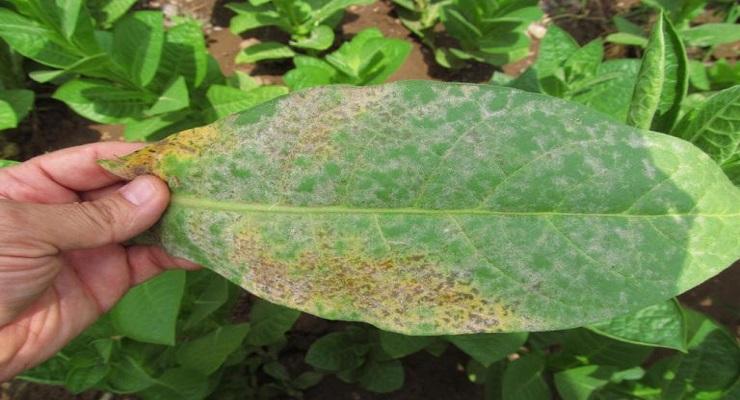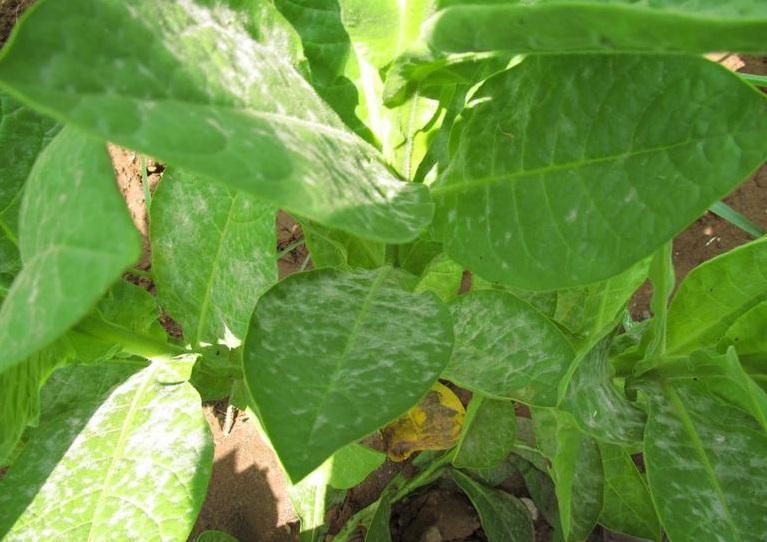Tobacco powdery mildew (Erysiphe cichoracearum) – identify and control

Tobacco powdery mildew, Erysiphe cichoracearum, is a disease quite widespread in tobacco-growing countries in Europe, the USA, Asia, and Africa and can cause significant damage through leaf depreciation.



Symptoms. Tobacco powdery mildew is first seen at the base of the lower leaves of the maturing plant, initially as greyish-white spots. Under favorable conditions of low temperatures and high humidity, these white patches spread to upper leaves, enlarge and cover the entire surface of the leaf. Underneath the powdery growth, the tissues turn yellow and dry out.
The pathogen is Erysiphe cichoracearum. It is transmitted from plant to plant by spores carried by wind and rain. The resistance of the fungus overwinters and its transmission into the following year is ensured by spores from the fungus’ resistant fruiting bodies (cleistothecia).
Prevention and control. Measures to prevent the attack include cultural hygiene measures, crop rotation, and using resistant varieties. During the growing season, it is recommended to apply specific fungicides.
Recommended products
-
You can find products on a different store
Change Store -
You can find products on a different store
Change Store -
You can find products on a different store
Change Store -
You can find products on a different store
Change Store -
You can find products on a different store
Change Store -
You can find products on a different store
Change Store -
You can find products on a different store
Change Store -
You can find products on a different store
Change Store -
You can find products on a different store
Change Store -
You can find products on a different store
Change Store -
You can find products on a different store
Change Store -
You can find products on a different store
Change Store -
You can find products on a different store
Change Store -
You can find products on a different store
Change Store -
You can find products on a different store
Change Store -
You can find products on a different store
Change Store -
You can find products on a different store
Change Store -
You can find products on a different store
Change Store -
You can find products on a different store
Change Store -
You can find products on a different store
Change Store -
You can find products on a different store
Change Store -
You can find products on a different store
Change Store -
You can find products on a different store
Change Store -
You can find products on a different store
Change Store















































































































































































































































































































































































































































